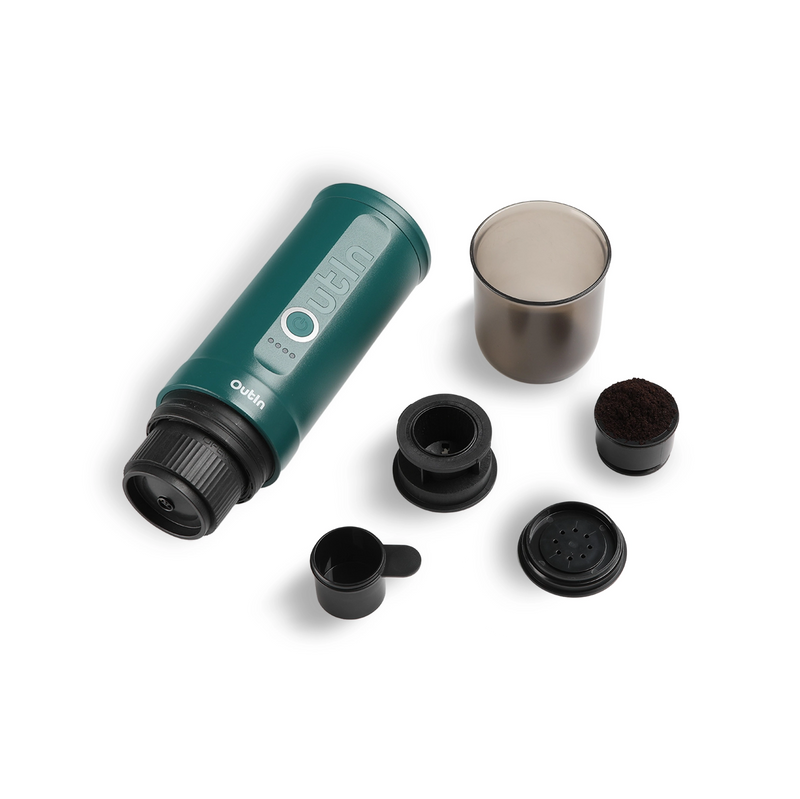Unleash Your Inner Barista: Discover the Secrets of Portable Espresso Machines!
In recent years, portable espresso machines have captured the hearts of coffee aficionados and everyday drinkers alike. These compact devices bring the café experience into the great outdoors, allowing you to savor rich, aromatic espresso wherever your adventures may lead. Whether you’re hiking through the mountains, camping by a serene lake, or simply commuting to work, the convenience of brewing your favorite espresso on the go is unparalleled. But before you rush to purchase one of these ingenious gadgets, it's essential to understand how they function and the key features that can enhance your brewing experience. In this article, we will dive into the mechanics of portable espresso machines and explore the various considerations to keep in mind before making a purchase.

How Portable Espresso Machines Work
Portable espresso machines operate on the same principles as traditional espresso makers, manipulating water and coffee grounds to create that beloved, concentrated brew. The brewing process begins with finely ground coffee beans, which are tightly packed into a portafilter. Water is then heated to an optimal temperature, typically around 190°F to 205°F, before being forced through the coffee grounds. This is where pressure comes into play. Most espresso requires a pressure of around 9 bars for optimal extraction, and portable machines achieve this through various means. Manual machines utilize a hand pump to generate the necessary pressure, while electric machines use an internal pump powered by a battery or external power source.
The heating method also varies: some portable espresso makers use a built-in heating element, while others rely on hot water from a kettle or thermos. My friend, an avid camper and coffee lover, swears by his manual portable espresso machine. He appreciates the simplicity and control it offers, allowing him to dial in the pressure and water temperature exactly to his liking, even in the wilderness. On the other hand, electric machines can be a game changer for those who prefer convenience and speed, delivering a café-quality espresso at the push of a button. Understanding these mechanics is crucial for selecting the right portable espresso machine that aligns with your brewing preferences.
Key Features of Portable Espresso Machines
When considering a portable espresso machine, several key features can significantly impact your experience. First, size and weight are paramount for portability. If you plan to carry your espresso maker on hikes or travels, a lightweight and compact design is essential. Additionally, brewing capacity is worth noting. Some machines brew a single shot at a time, while others can accommodate multiple shots, making them more suitable for sharing with friends or family.
Ease of use is another critical factor. Certain models have straightforward designs that are user-friendly, while others may require more knowledge and technique. For instance, my friend had a tricky time with an intricate manual machine until he got the hang of it but now enjoys the craft. Cleaning is also vital; a machine that disassembles easily will save you time and effort. Lastly, consider the materials used in construction. A durable build can withstand the rigors of travel and ensure longevity, giving you the best value for your investment.
What to Consider Before Buying a Portable Espresso Machine
Before making a purchase, it's essential to evaluate several factors that will influence your decision. Start with your budget. Portable espresso machines can vary widely in price, so it's important to determine how much you're willing to invest. Keep in mind that a higher price often correlates with better materials, build quality, and advanced features. Next, consider your personal coffee preferences. Do you prefer a strong espresso, or do you enjoy experimenting with different brewing methods? Understanding your taste can help you choose a machine that aligns with your coffee style.
Another critical factor is the frequency of use. If you plan to use your portable espresso machine daily or several times a week, investing in a more robust model may be worth it. Conversely, if it’s mainly for occasional use during travel, a simpler, budget-friendly option might suffice. Lastly, think about the intended use cases. Are you going to use it for road trips, camping, or perhaps even in your office? Different scenarios may require different features and capacities. Assessing these factors will guide you toward the perfect portable espresso machine that fits seamlessly into your lifestyle.
Comparing Different Types of Portable Espresso Machines
When delving into the world of portable espresso machines, you'll encounter a few main types: manual, semi-automatic, and fully automatic. Manual machines, as the name suggests, require hands-on operation, making them ideal for those who enjoy the art of coffee-making and have the patience to master the techniques. They are often the lightest and most compact, perfect for travel, but can be challenging for beginners.
Semi-automatic machines bridge the gap between manual and fully automatic, offering some automated features while still allowing for user control. They usually strike a balance between portability and usability, making them a popular choice among enthusiasts. Finally, fully automatic machines provide the utmost convenience, allowing you to brew espresso at the touch of a button. While they may be bulkier and less portable, they excel in delivering consistent quality with minimal effort. Weighing the pros and cons of each type in relation to your needs will help you make an informed decision.
Final Thoughts on Portable Espresso Machines
In conclusion, portable espresso machines offer a fantastic way to enjoy quality espresso no matter where life takes you. Understanding how these machines work, recognizing the key features to consider, and evaluating your personal needs are all crucial steps in the buying process. Whether you’re a seasoned barista or a casual coffee drinker, embracing the journey of becoming your own barista can be incredibly rewarding. So explore your options, and get ready to savor each sip of your freshly brewed espresso, crafted by your very own hands!
 Series/TV Show
Series/TV Show 
